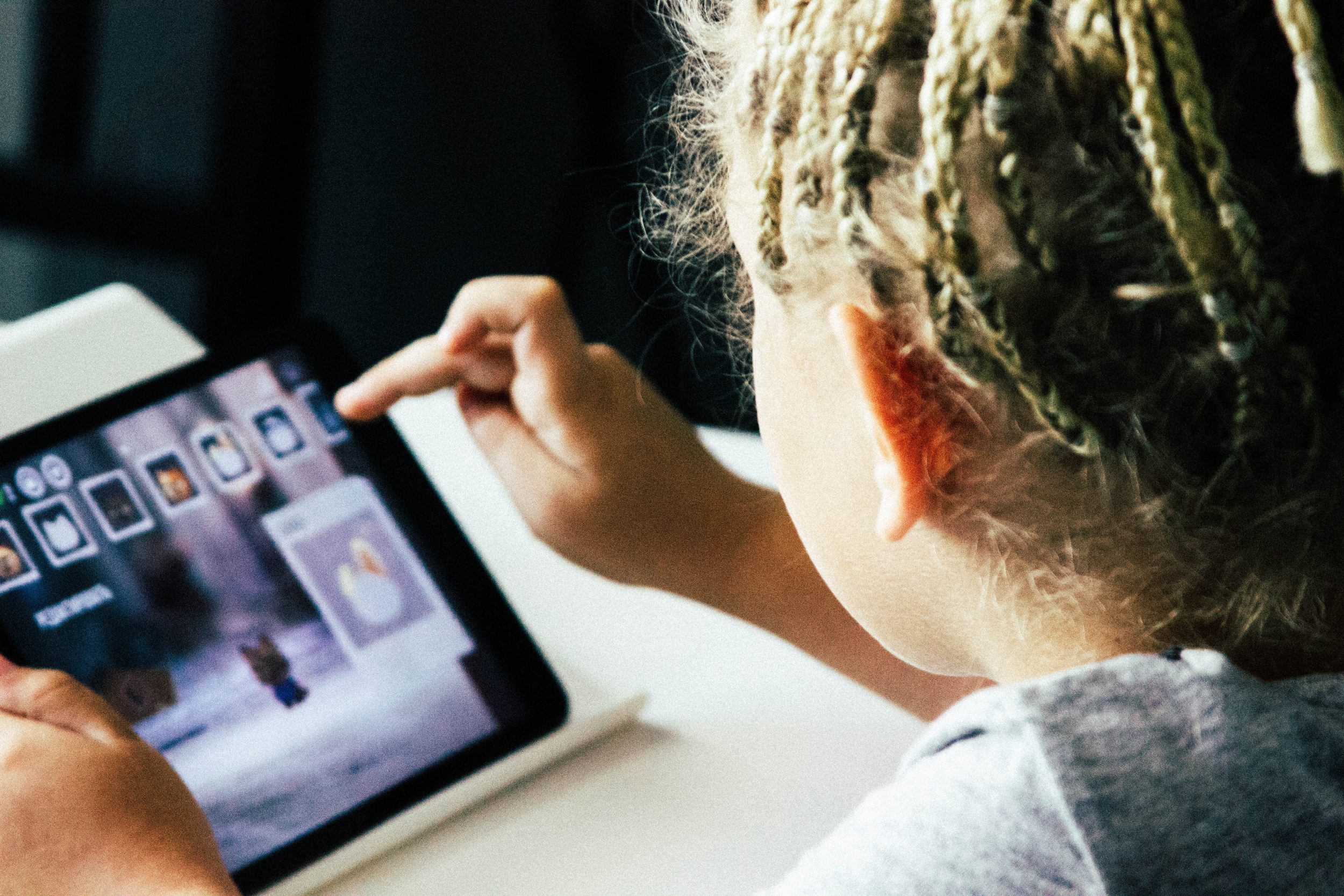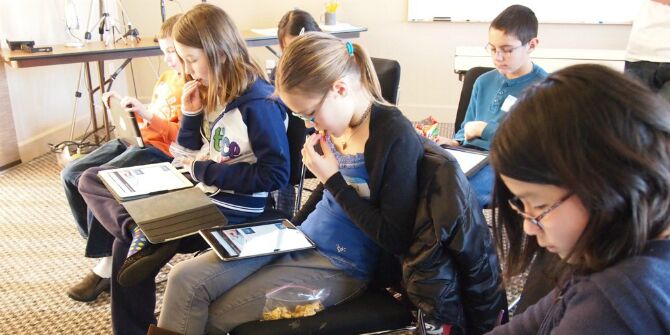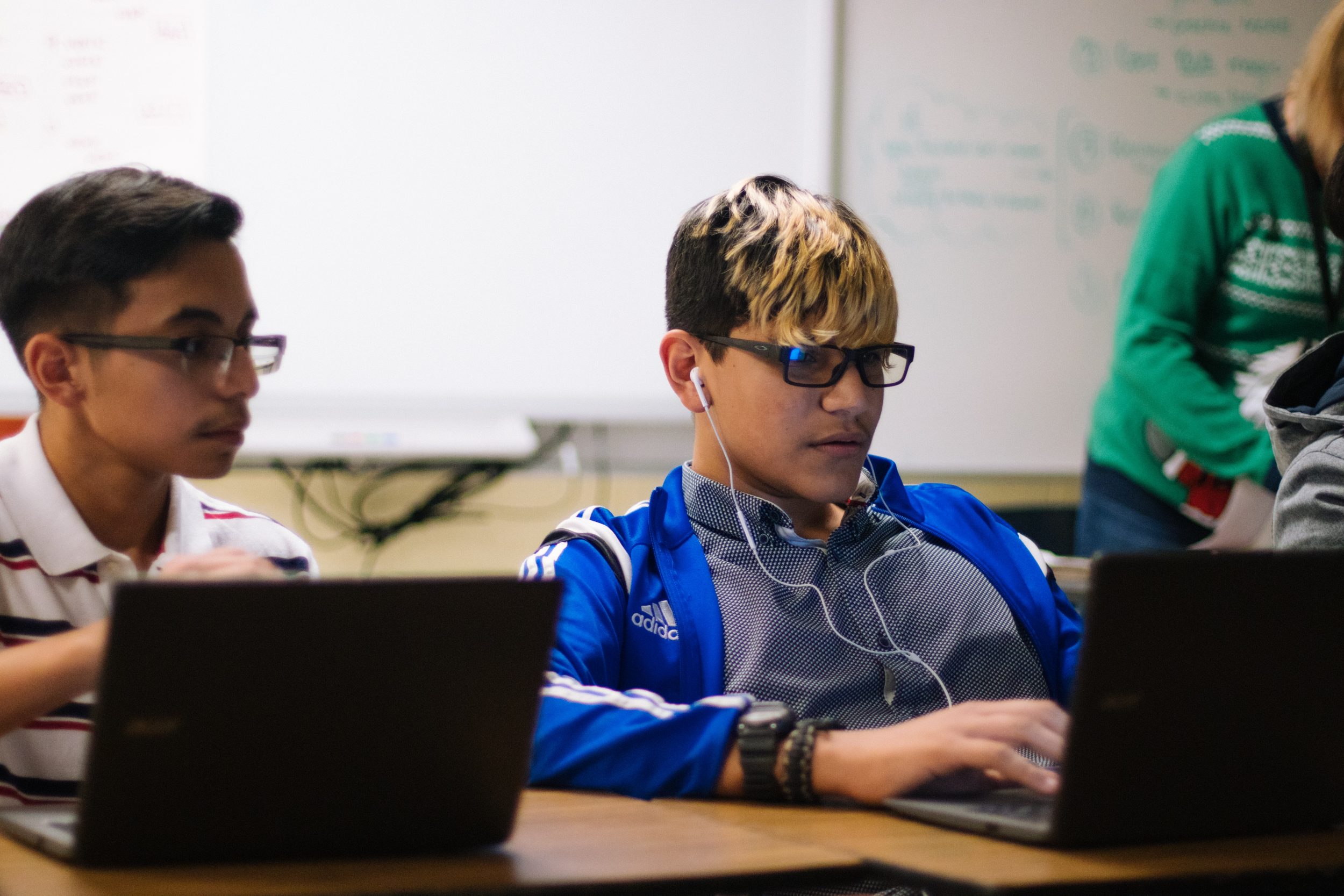 This post is based on Professor Sonia Livingstone’s keynote presentation at Ofcom’s Making Sense of Media Winter Conference on 5 December 2023, in which she discussed the changing nature of media literacy and the relevance of a human rights based approach to thinking about what media literacy is ultimately for.
This post is based on Professor Sonia Livingstone’s keynote presentation at Ofcom’s Making Sense of Media Winter Conference on 5 December 2023, in which she discussed the changing nature of media literacy and the relevance of a human rights based approach to thinking about what media literacy is ultimately for.
“Poverty is not just a lack of money; it is not having the capability to realize one’s full potential as a human being”
– Amartya Sen, Nobel prize winner
Amartya Sen’s account of capability in terms of human flourishing established a multidimensional understanding of international development beyond the purely economic that world leaders have found compelling in recent decades. What’s important – what we should prioritise – is the freedom to achieve what matters not only to individuals but also to communities and society.
In the UK and elsewhere, there’s been recent interest in “digital poverty” and what to do about it. This is not least because the evidence suggests that digital poverty is on the rise, and the digital divide is not only still with us but becoming more entrenched and urgent. So, let me paraphrase Sen:
Digital poverty is not just a lack of technology; it is not having the capability to realize one’s full potential as a human being in a digital age.
In effect, we should not just assess what people have or lack, but what they have in relation to who they could be, how they can flourish together. And we who have power over society’s resources can begin to discover what this looks like, and how to achieve it, by consulting the people who stand to benefit – or lose – from our interventions.
In this context, ‘capability’ clearly includes media and digital literacy. By this, I refer to the forms of knowing, being and doing that people need to realize their full potential as human beings in and through today’s digital environment. This definition highlights rather than bemoans the fact that media literacy is a moving target – as are the business and societal infrastructures that underpin it. And it emphasises the importance of context – different groups need to know different things, depending on the specifics of their lives.
Media literacy policy: A turning point?
In recent years, media literacy policy has taken a new and welcome turn. It is more consultative, including with neglected and at-risk groups, and more evaluative regarding what works. However, while consultations have revealed lots of frustrations and barriers ,and evaluation is beginning to show which interventions achieve their goals, what are these goals? Are their sights set high enough?
Here I ask, what’s the best we can expect of media literacy? Can it help realise human rights, and facilitate human flourishing? These questions were often asked 20 years ago, at a time when digital innovation seemed to expand the possibilities for human expression and participation. In today’s more cynical times, with big tech pushing ever more standardised, profit-seeking, attention-grabbing content, I wonder if we can resurrect a positive vision for media literacy.
The push and pull of technology changes the task of media literacy
Forgive me if “pushing” seems too negative a term, given the wonderful opportunities that technology has brought us. But how things have changed over recent decades. In the late twentieth century, television was talked of as a ‘push’ technology (a “sit back” technology, according to marketers) while “the internet” was a ‘pull’ (or “sit forward”) technology, celebrated for empowering its newly active users to choose where they wanted to go today (to paraphrase Microsoft).
Today, the situation is reversed, as television viewers face a bewildering array of broadcast, catch-up and streaming services, while internet users have content “fed” to them by personalised algorithms closely tailored to sustain their undivided and unending attention. In such a context, the task of media literacy education must radically change.
Still, we have made some valuable advances in the past two decades. Not only has the UK has long led the international debate over media literacy and media education, but the scale of Ofcom’s media literacy research is the envy of other countries, and we have a mature multistakeholder media literacy community.
Now too, with the Online Safety Act, we have a newly powerful regulator that should improve the legibility of the digital environment so that individual users are less personally burdened with coping with what one parent described as ‘the tsunami’ of digital devices entering the home – many of them opaque technologies that risk making people media illiterate by design. For in a digital environment that’s pivoting from pull to push, the media literacy challenges posed by datafication, genAI, surveillance, and algorithms may exceed what the public can keep up with.
Yet the media literacy community in the UK remains fragmented and under-resourced, struggling for sufficient scale and sustainability, despite the enthusiasm and creativity of its champions. Since this is, sadly, hardly a new problem, it may seem naïve of me to ask for more than attention to the hygiene factors of the digital environment – access and accessibility, security, safety, privacy. Nonetheless, it is also vital to consider the opportunities opened up by media literacy.
What media literacy initiatives are required for the public to enjoy the capability to realize their full potential as human beings in a digital age?
Following Sen, I suggest that this question should be answered collectively rather than individualistically. This is not only because, in our unequal society, if just some people flourish in the digital age, matters become even worse for the others, but also because it takes the commitment of society’s institutions to bring about the transformation required. Print literacy took not only the printing revolution but also the invention of the school and, thence, a public education system. Today, we have a digital revolution, but only partial media literacy – maybe we need to reinvent the school, and our valuation of the knowledge it teaches.
Since different groups need to know different things, the question of what (and who) media literacy is for should be answered through consultation. Not only by asking people whether they can interpret this interface or know enough about those algorithms or have the confidence to report fake news. But by asking them what they want of their lives and the wider society they live in and, so, what they wish to know about and do with digital technologies that can help achieve their idea of human flourishing. As Sen might say, the question is not so much what we think people need to know about technology, but how they can access and use technology to bridge the gap between their lived reality and the good life they hope for.
From knowledge to outcomes
As part of the European Commission-funded ySKILLS project my colleagues and I reviewed recent research on the outcomes for adolescents of learning digital skills and literacy. What was most striking was how many studies put detailed effort into sampling, measurement and reporting findings while remarking in only the vaguest terms why adolescents might find such skills useful. They rarely demonstrated that digital literacy actually brings out what my colleague Ellen Helsper calls ‘tangible outcomes’. Since we have a culture that criticises young people for going online and all they do there, I was left wondering what all this digital skills training is for. Jobs that haven’t been invented yet? Getting ahead of your peers? Becoming an influencer? Being kind online?
Of course, I myself do not doubt our purpose in promoting media literacy. But I do urge that we articulate and reflect on this purpose. Such reflection matters not least because research shows that media literacy takes people in many directions, not all of them kind or civil. My colleague Shakuntala Banaji researches cultures of online hate – and finds that the people who spread online hate can be highly media literate – expert in spreading conspiracy theories, creating memes, gaming algorithms, covering their tracks and exploiting the vulnerabilities of others in digital contexts.
Different yet related, our research on the digital literacy of young people with mental health problems found that it was often precisely their media literacy that took these young people into extreme online spaces that many of us here wouldn’t know how to find or engage with. This might build their digital resilience, but it might trigger negative emotions or intensify their difficulties. As we have often said in the EU Kids Online network, online risks and opportunities tend to go hand in hand, and both are facilitated by media literacy. As we therefore also concluded, the task is not only to promote media literacy but to engage with the society in which media literacy is enacted. The pathway from knowledge to outcomes is not travelled in a vacuum.
The human rights approach
Education is a human right. Gaining media literacy is a form of learning, and we have found out the hard way that such learning takes more than one-shot awareness-raising campaigns. It takes education. And that takes time, resources, pedagogy, institutional commitments. And in a digital world, education must embrace media literacy and thereby expand not mainstream or constrain human possibilities.
The UN Convention on the Rights of the Child requires that states undertake to realise:
“the development of the child’s personality, talents and mental and physical abilities to their fullest potential.”
We are a long way from this in many respects. But in relation to the digital – where today’s talk is of mobile phone bans, parental controls and screen time limits – we have come to fear rather than relish or support young people’s exploration, experimentation, privacy, play and free expression online. Yet these are rights too, as we are exploring all of these in our new joint LSE and 5Rights Digital Futures for Children research centre.
Media literacy is an important but not the sole outcome of media education. A human rights approach also asks, what follows? There can be many answers, but we are yet thoroughly to articulate or research or plan for them. Meanwhile, the trouble is we are beginning to blame young people for using their digital knowledge and skills in a conflicted world that doesn’t sufficiently hear from them or meet their needs – to flourish, to realise their fullest potential. And such blame, in turn, ends up further constraining their rights.
Let me end on a positive note. For media literacy to help realise human rights and facilitate human flourishing – including diverse forms of creativity, human connection, community and political participation – the institutions and structures of our society must make room for people’s agency, knowledge and self-determination, finding ways to recognise and value and enable these, perhaps transforming themselves in the process. In short, media literacy is not a stand-alone project. To see the positives of media literacy, we have to imagine a positive vision of society – what it could be, what people want it to be, what they need it to be. I don’t know if we can agree on the answers. But perhaps we can agree that the answers matter.
This post represents the views of the author and not the position of the Media@LSE blog, nor of the London School of Economics and Political Science.





